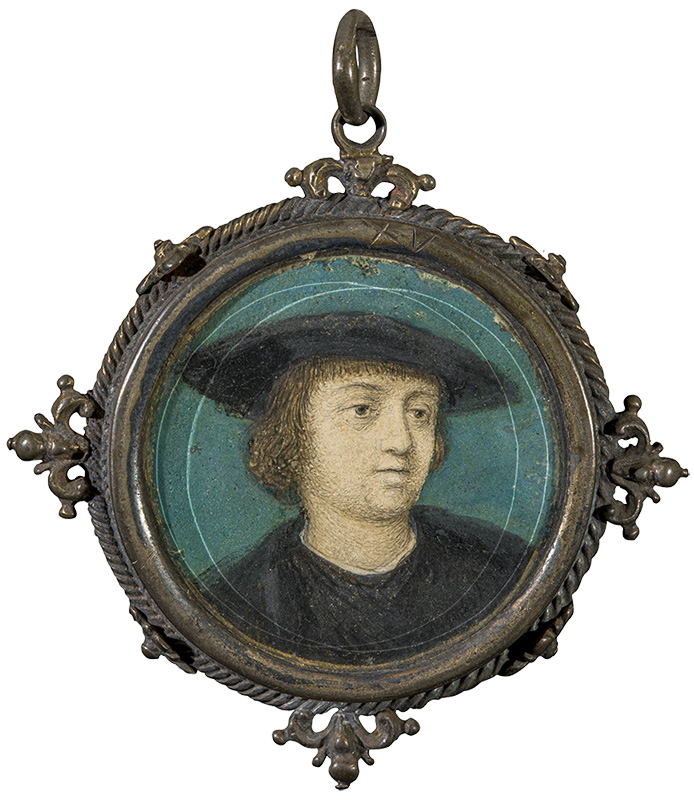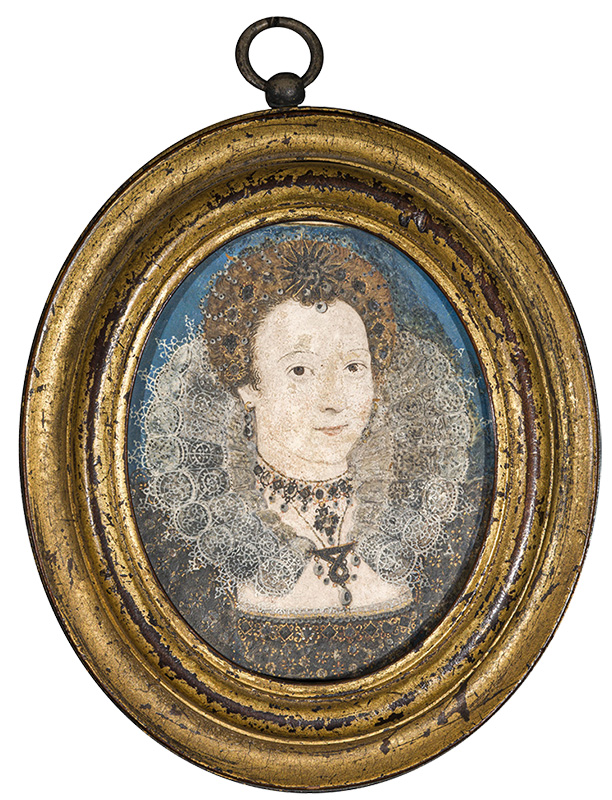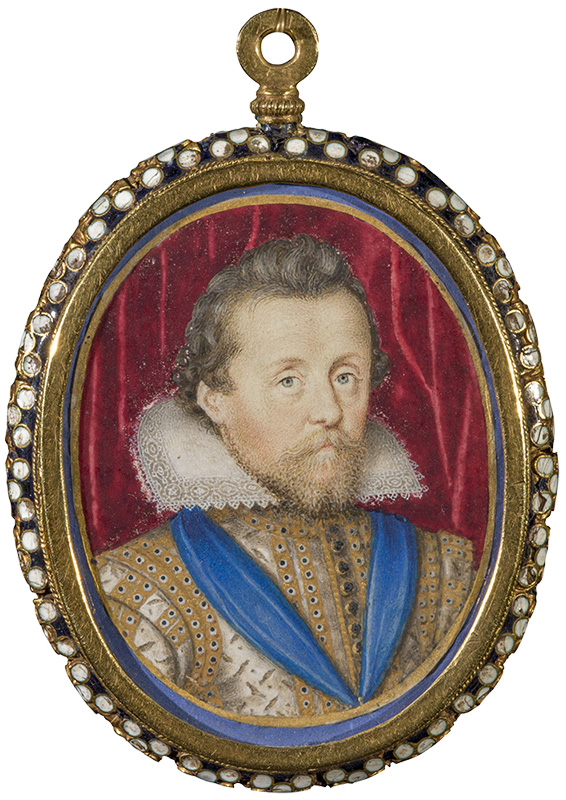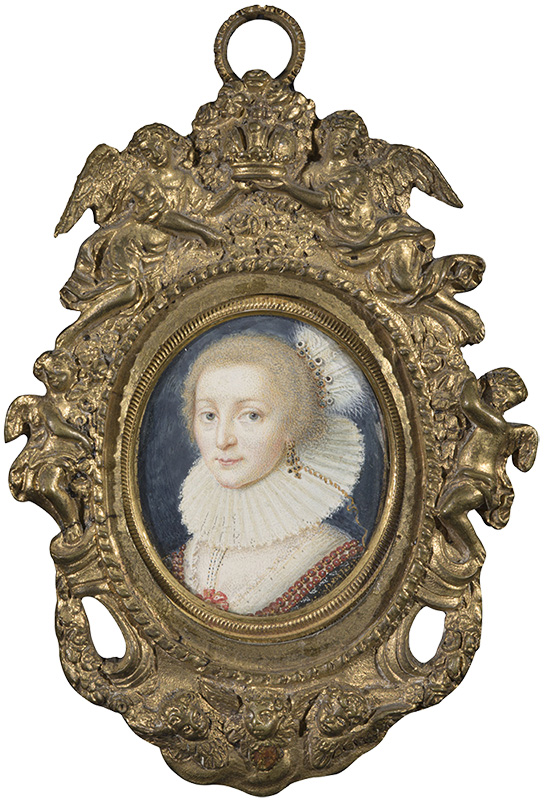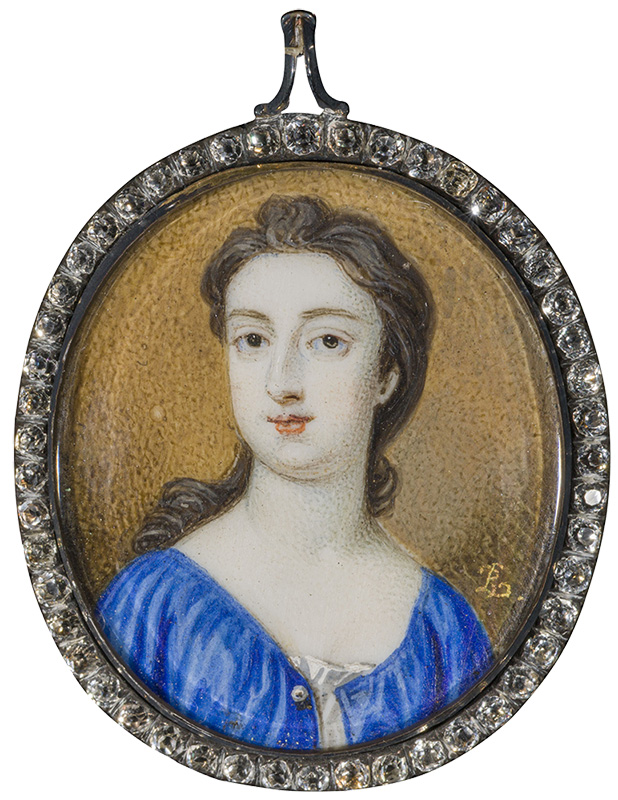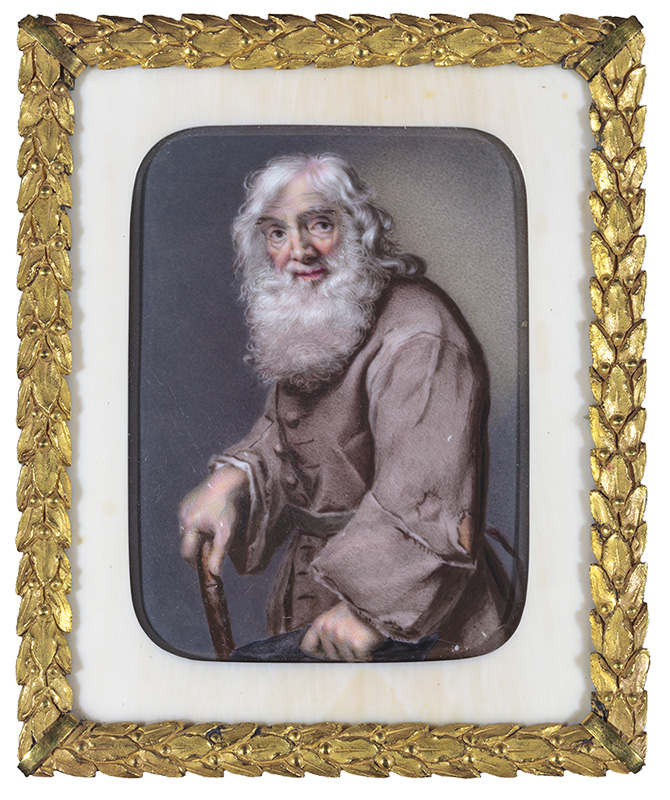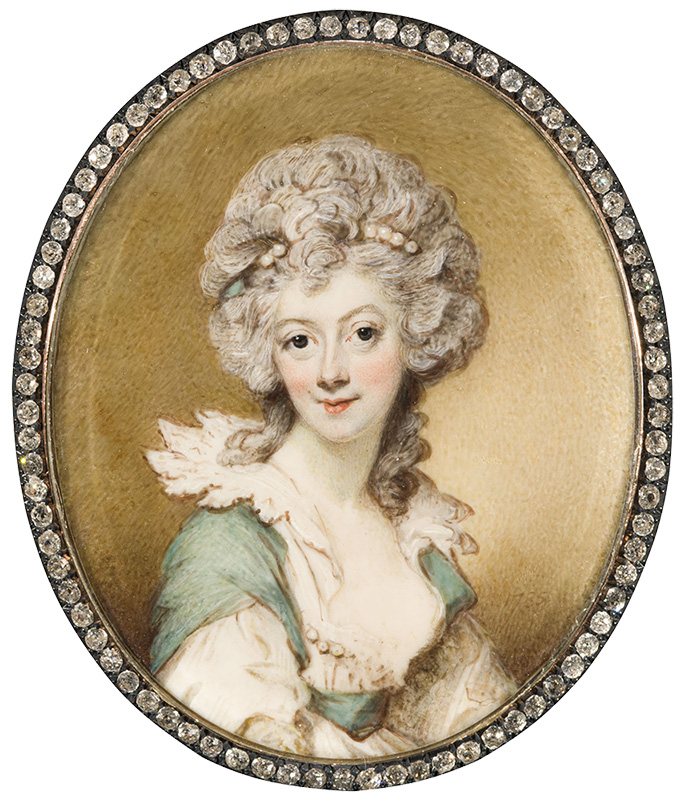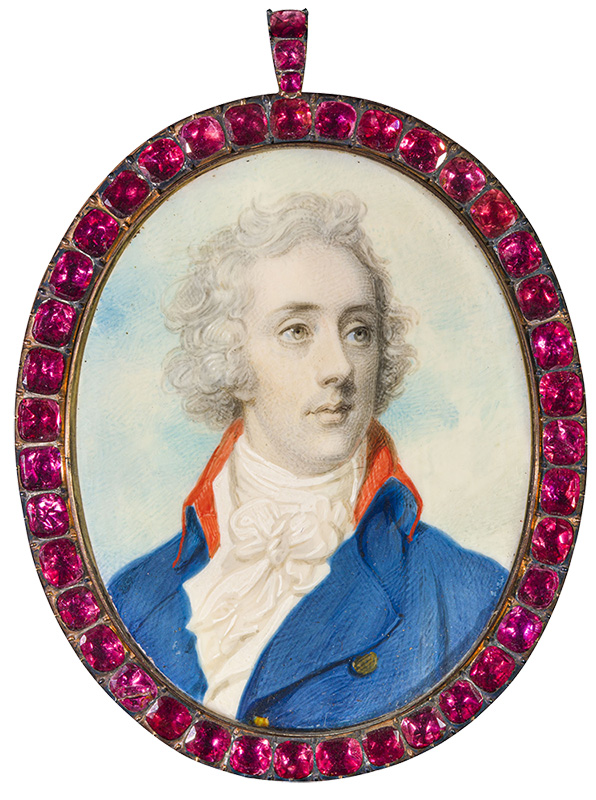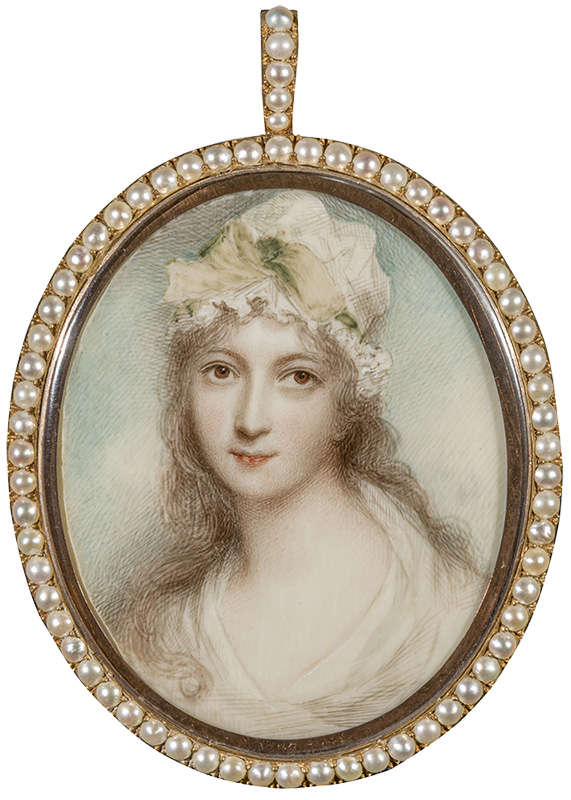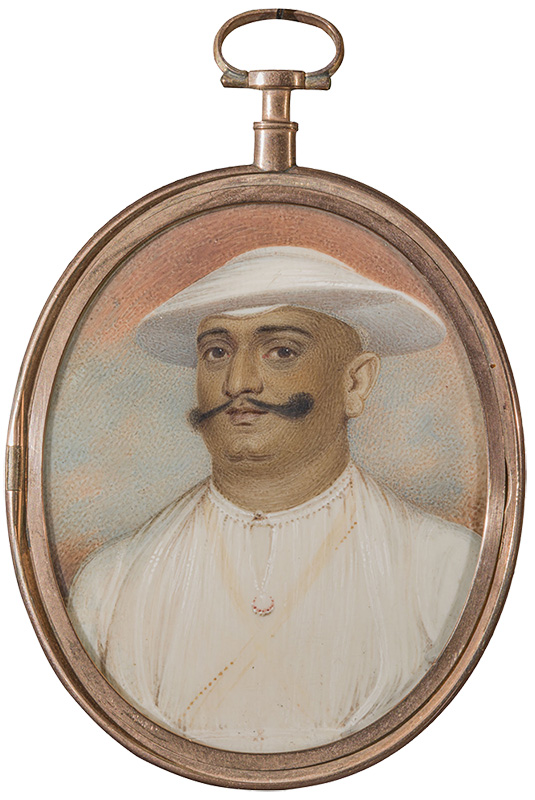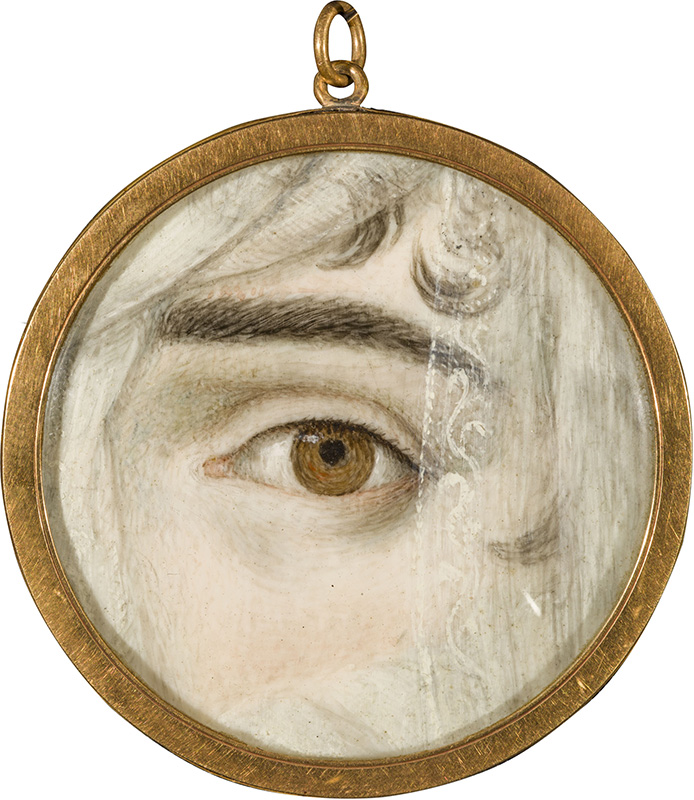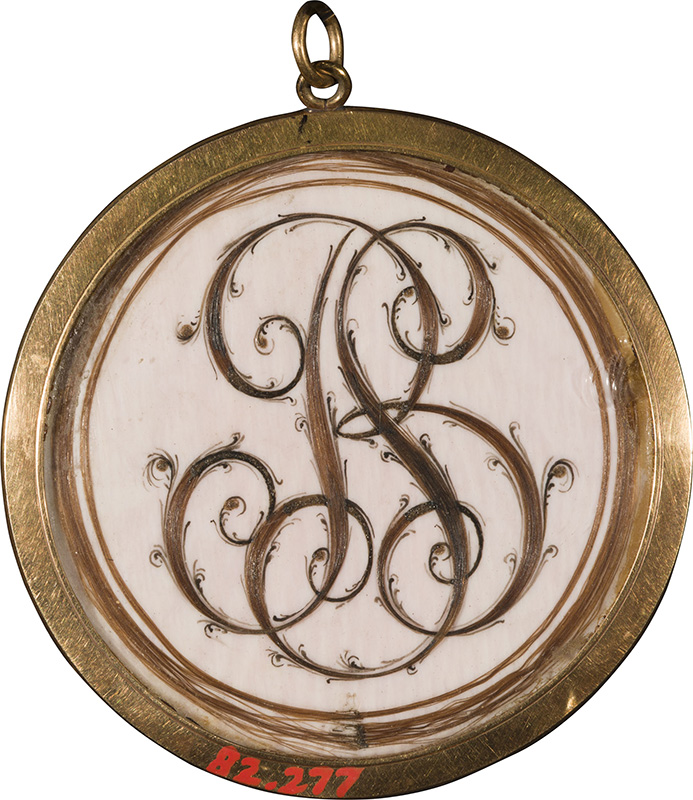Small but Stunning: Portrait Miniatures at the New Orleans Museum of Art
by Mel Buchanan
Cradled in the palm of your hand or worn close to your heart, portrait miniatures functioned as intimate tokens of love, loyalty, or memorial. These tiny portraits capture remarkable details of delicate lace, extravagant jewelry, magnificent hairstyles, and royal adornments, rendered by talented artists occasionally using a brush with a single hair. Centuries before megapixel iPhone photography, or even the earliest daguerreotype photographs, painted portrait miniatures were an elegant way to carry a loved one with you over distance and time.
The New Orleans Museum of Art (NOMA) has a celebrated collection of this specialized art form. Ranging from the court of Henry VIII to Napoleonic France, the Latter-Schlesinger Collection at NOMA is one of the singularly important portrait miniatures collections in the United States, with masterful examples of the most important artists and techniques in the medium, yet had not been shown for nearly a decade.
The collection was given to the museum in 1974 by Shirley Latter Kaufmann in honor of her parents, Harry and Anna Latter, who assembled the collection through a love of British history. England-born Harry Latter and his Louisiana-native wife Anna Shushan Latter travelled to London in 1957 at the request of President Dwight D. Eisenhower. During their stay, Latter oversaw a government project and became an avid and knowledgeable collector of English and Continental portrait miniatures. Together with their daughter Shirley and her children, the Latters scoured London auctions and shops along Portobello Road and even gained access to see Queen Elizabeth II’s Royal Collection.
The artform of portrait miniatures originated in Medieval Europe. The highly skilled artists behind the church’s illuminated manuscripts liberated images from their bound pages and into a handheld, secular form. By the 1520s, these miniature portraits became essential communication tools in European court life. The earliest were painted onto vellum (stretched animal skin) or cardstock. NOMA’s oldest example is a c. 1520 depiction of Ulrich von Hutten (figure 1), a scholarly follower of Martin Luther. Although the specific hand of the work is not known, the artist worked within the style and technique of Hans Holbein. Holbein emigrated from Germany to England in 1532 to serve as Henry VIII’s court painter, famously supporting the tempestuous king’s use of portrait miniatures to assess the beauty of potential wives.
Through the tumultuous 16th and 17th centuries, the English court continued to rely on the power of image for political and diplomatic purposes. The fraught Elizabethan years saw wealthy subjects wearing images of their Queen as a badge of loyalty. Queen Elizabeth I’s official portrait painter Nicholas Hilliard was the first notable English miniature artist and is responsible for some of the era’s greatest artworks both in miniature and in traditional oil portraiture. Hilliard’s technical manual A Treatise Concerning the Arte of Limning (c. 1600) detailed the preparation of materials and tools used in the fairly new artform and was greatly informed by the artist’s previous training as a goldsmith. Hilliard’s Elizabethan Court Lady (figure 2) displays magnificent metallic necklaces and earrings that are nevertheless a cut below the elaborate court jewels worn by the Queen herself.
Remarkably, Nicholas Hilliard served as court limner to both the Virgin Queen and her successor, Elizabeth’s Scottish cousin who ascended to the English throne as James I (1566–1625) in 1603. This smooth transition of power united England, Scotland, and Ireland into Great Britain. Like Queen Elizabeth, James I of England (figure 3) saw the power of royal image and commissioned Hilliard to paint numerous portraits of himself, his wife, Queen Anne of Denmark, and their seven children. The king deployed miniatures as gifts during peace negotiations with Spain in 1604, and as a tool for the strategic marriage of his eldest daughter, Princess Elizabeth.
Elizabeth Stuart is remembered as the English princess forced into ruinous exile. In 1613, she married a fellow Protestant, Frederick V of The Palatinate, a part of modern-day Germany. Despite political upheaval, Frederick accepted the throne of Bohemia and the couple were crowned King and Queen in Prague in 1619. Soon after, the Protestants were ousted in a 1620 military defeat to the Catholic Holy Roman Empire as part of the Thirty Years War. Exiled to The Hague for the rest of her life, Elizabeth was known as the “Winter Queen” for the single season of her reign. NOMA’s elegantly framed c. 1630 miniature by Peter Oliver shows Elizabeth, Electress Palatine and Queen of Bohemia (figure 4) wearing the formal ruff collar and ornate jewelry in the style of her namesake, Queen Elizabeth I.
Only a few years later in date, Samuel Cooper shows a very different fashion in his 1654 portrait of Frances Russell, née Cromwell (figure 5). Instead of the Elizabethan-era stiff lace and jewels, young Frances wears simple pearls, has exposed skin, and her hair cascades in ringlets. Even the background, with a curtain casually pulled aside to indicate the landscape beyond, reflects the fashion for naturalism. This less-formal style arrived in England in 1632 with King Charles’ court painter, Anthony van Dyck.
Shortly after 1700, the preferred medium for portrait miniatures evolved from vellum to watercolor painted onto thin slices of ivory, which offered luminosity behind translucent paints. Ivory’s surface was oily and non-absorbent, but artists developed techniques for roughening and degreasing the ivory and making their paints stickier. Bernard Lens III was the first British artist to begin working on ivory. Lens adopted a stippling technique, using small dots to help the watercolor adhere onto the unforgiving slippery surface. His painting of an unknown Woman in a Blue Dress (figure 6) shows this innovative technique in the light areas of her skin. Lens used opaque paints that are more stable but obscure the luminous ivory for the clothing, hair, and background.
Rupert Barber was one of the first professional miniaturists in Ireland. He worked elegantly in enamel, with intense colors that beautifully capture the personality of his subject. NOMA’s small cabinet picture by Barber features an unusual subject. Rather than an affluent and well-connected individual, this captivating man with a ruddy complexion and silvery white beard is William Thompson (figure 7), known in his day as the “Beggar of Dublin.” Barber’s rare study drawing for this picture in the National Gallery of Ireland notes that Thompson was said to be 114 years old.
Also working out of Dublin, Horace Hone featured more typical subjects with his well-dressed society women, painted with distinctively large eyes and rosy cheeks. The specific identity of NOMA’s Mrs. Edward Brown (figure 8) is not yet known, but she is painted like all Hone’s 1780s Dublin women against a rich olive-brown background with strands of pearls in her hair and dress. Hone learned the art of miniatures from his father Nathanial Hone, and he exhibited at London’s Royal Academy by the age of 16. At the invitation of a patron, Horace Hone went to Ireland in 1782 and soon attracted a fashionable clientele for miniature likenesses that flattered the elite women.
The late 18th century was the unparalleled heydey of miniatures on ivory, and Richard Cosway was the flamboyant master, who, like Hone, flattered his subjects. Cosway lived his life at the center of a dazzling cultural elite, including the Prince of Wales (the future King George IV), painting the Prince nearly 50 times. In 1781, Cosway married English-Italian artist Maria Hadfield, a confidant to Thomas Jefferson. NOMA’s collection includes Cosway’s William Pitt the Younger (figure 9), a prominent British statesman who became the youngest Prime Minister in 1783 at the age of 24. The image is thinly painted, showing Cosway’s daringly transparent pigments that allowed the natural luminosity of ivory to shine through. This gives a realistic dimension to the cloudy sky and a lifelike “peaches and cream” to Pitt’s complexion.
Another member of the British elite is captured in NOMA’s Henrietta Ponsonby, Countess of Bessborough (figure 10) by Anne Mee. Younger sister to the infamous Georgiana Cavendish, Duchess of Devonshire and denizen of Chatsworth House, Henrietta’s life was also one of excitement and personal intrigue. She lived continually amid rumors of extramarital lovers, excessive gambling, and controversial political involvement. Having painted since she was a girl to support her widowed mother and eight siblings, Mee was the protégé of England’s most fashionable artist, George Romney. Even after her 1793 marriage to Joseph Mee, Anne continued to paint professionally, although reportedly only of female subjects owing to the intimacy of portraiture.
The portrait miniatures mania of this era attested to Britain’s expansion through worldwide colonization. Artist Ozias Humphry traveled in British-controlled South Asia from 1785 to 1787, confident that the community of British expatriates and wealthy Indian princes would provide fame and fortune to an artist working in a distinctively European art form. NOMA’s miniature depicts Dodda Vira Raja (figure 11), who ruled Coorg (Kodagu), a rural district in the southwest Indian state of Karnataka. Humphrey’s venture abroad turned disastrous when many of his clients refused to pay their bills, sending the artist back to England in a financial crisis.
After three hundred years of use as symbolic communication tools, the late 18th century saw a new fad bring a tantalizing, if not a bit bizarre, chapter to portrait miniatures. In 1785, England’s Prince of Wales sent a figurative piece of himself, his own eye painted in miniature on ivory, to his clandestine fiancé Maria Fitzherbert. The romantic gesture made “lover’s eyes” portraits popular into the 19th century. The reverse of a c. 1810 French example (figure 12) in NOMA’s collection features delicate hairwork forming indecipherable initials (figure 13), so like nearly all surviving eye portraits we can only guess at their meaning. Exchanged intimately, the beauty of an eye portrait is that the true identity is known only to closest confidants.
The captivating miniatures discussed in this article are all on view at the New Orleans Museum of Art in a new, rotating permanent installation that details the highly-skilled craft of miniature painting and the stories behind the artists and sitters, who were often the celebrities of their day. The Latter-Schlesinger Collection shows the artform from its Medieval roots, through the 18th-century portrait miniature mania, and to the Victorian era when they faded from popularity with the onset of photography. With the growing imperative that museums must, for the foreseeable future, consider their virtual audiences as vital to the museum’s work as their gallery visitors, NOMA partnered with the Google Arts & Culture project to publish incredible high-resolution images of the important collection. Zooming deep into these miniatures, you can see them better, than if you were holding these treasures in the palm of your hand. Digital technology and megapixel photography is bringing a new audience and, ironically, a new form of intimacy to portrait miniatures.
Mel Buchanan is the RosaMary Curator of Decorative Arts & Design at the New Orleans Museum of Art. Mel wishes to thank the Milton H. Latter Educational and Charitable Foundation for support of the 2019 installation project at NOMA and Elle Shushan for generously sharing her expertise.
A print version of this article was published in The Magazine of the Decorative Arts Trust, one of our most popular member benefits. Join today!

